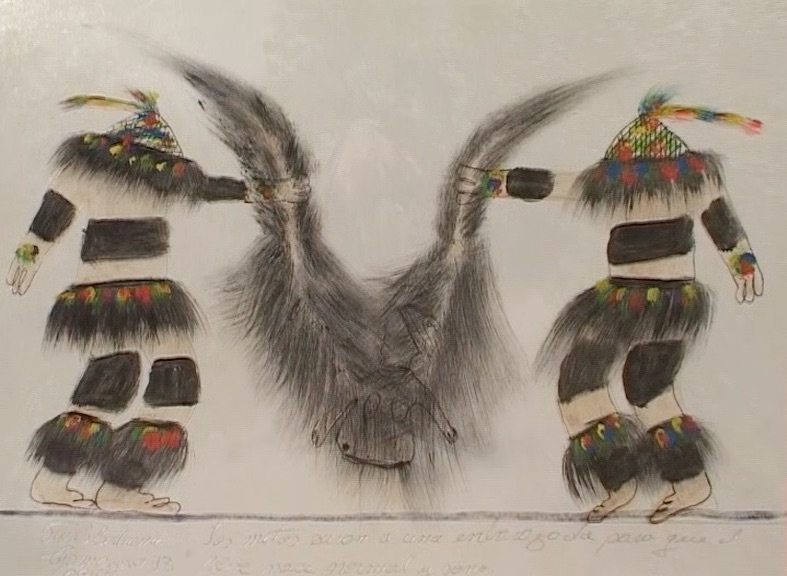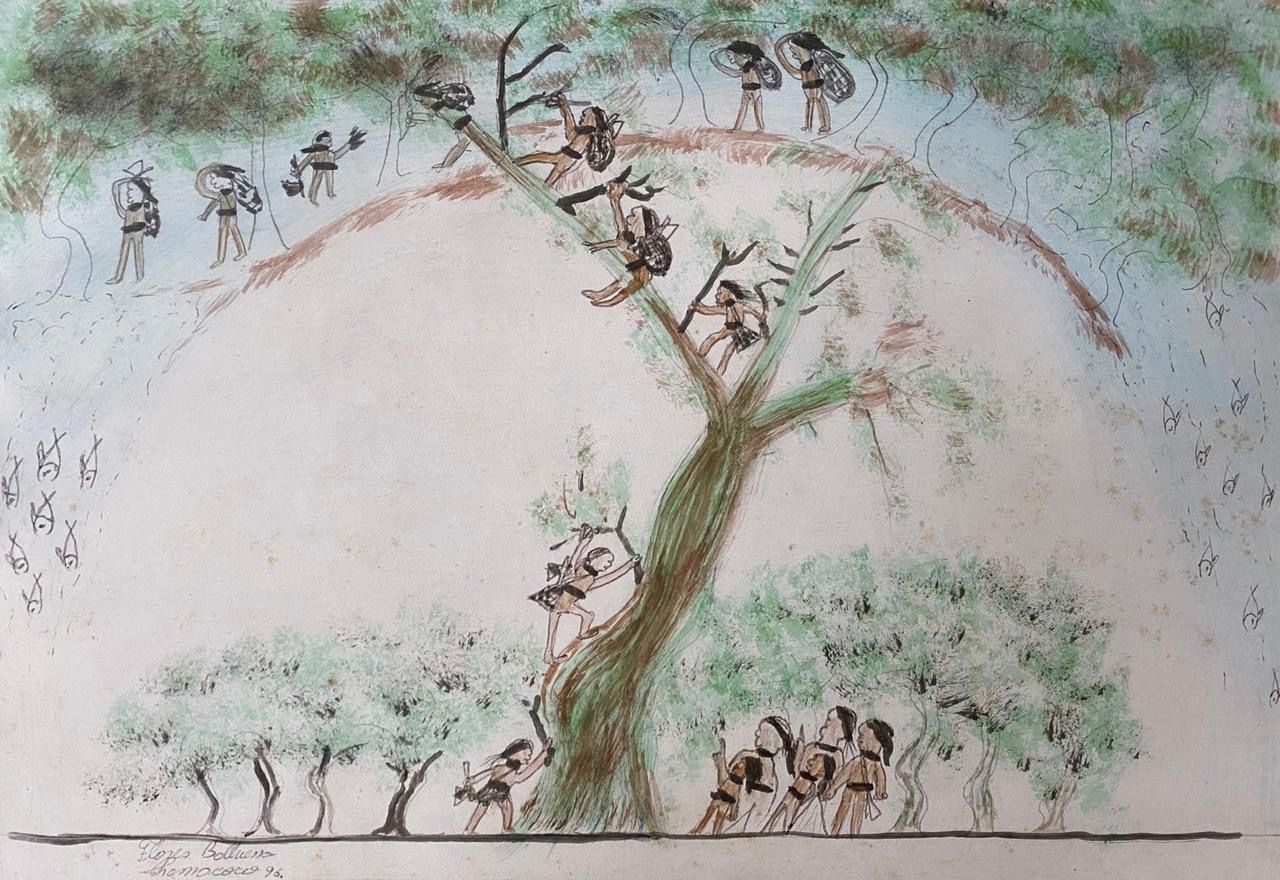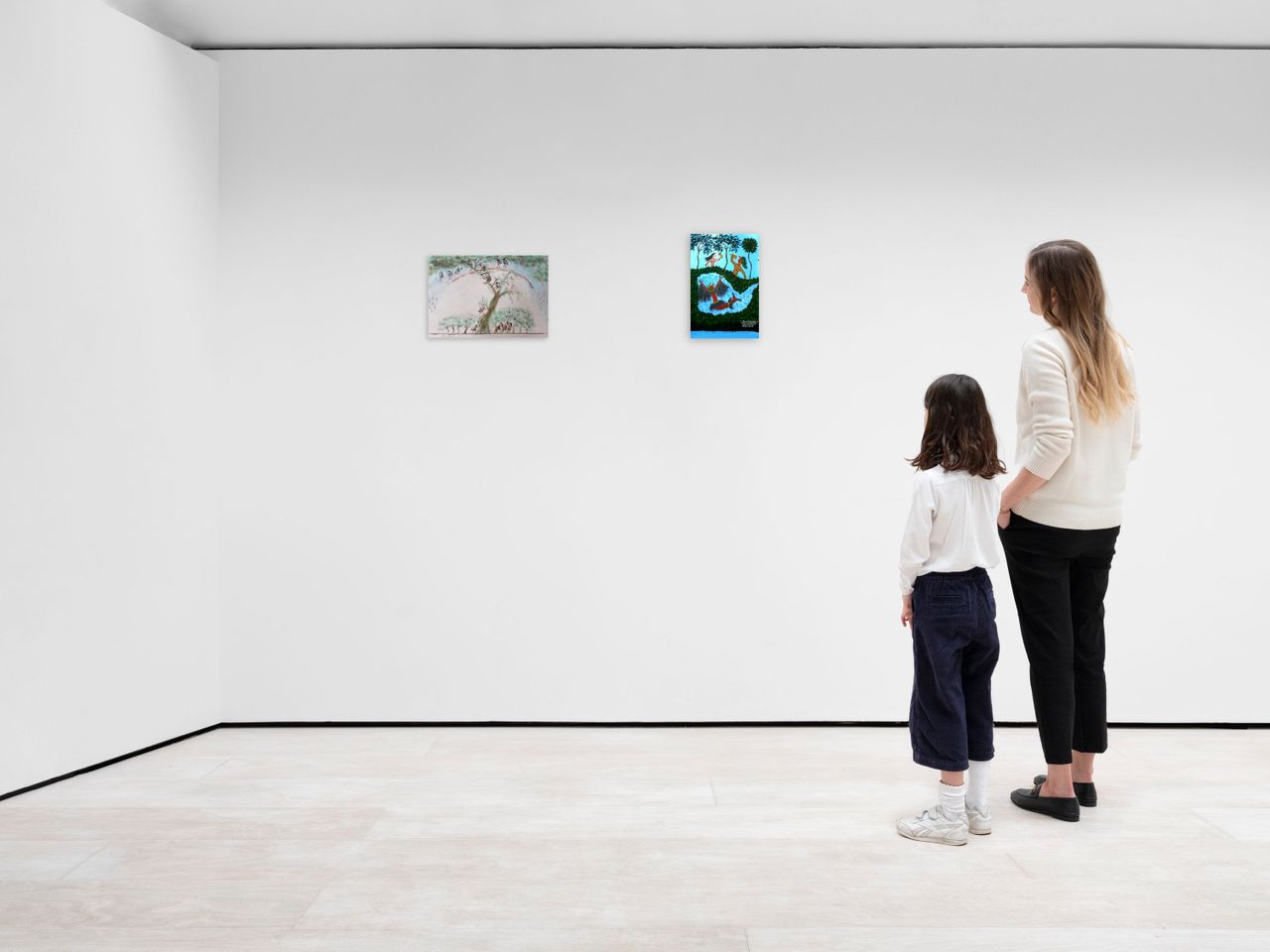
Since the 1990s, members of indigenous communities have begun carving out a new space for drawing and painting, which did not figure in traditional culture. The first person known to become, or identify with, being an artist was Ogwa (1938?-2008), born in the Chaco Boreal (Alto Paraguay), a region bordering Bolivia. His Paraguayan name was Pedro Flores Balbuena, given to him by anthropologist Branislava Sušnik as a young boy. It was the same anthropologist that gave Ogwa a pencil asking him to draw pictures of the Ishír (Yshyr) Chamacoco’s, his community’s, traditions. For representing the ancient secrets of Ishír culture, which was not meant to be drawn and dispersed, to the many who sought to learn about it, Ogwa was ostracised from his community. While traditional Ishír art was mainly expressed in geometric motifs, in his figurative work, Ogwa depicted childhood memories, shamanic rituals and spirits and deities of rivers, forests and sky. Ogwa had his first major exhibition at the Museo Nacional de Bellas Artes in 1996 and has had exhibitions Germany, Argentina and Spain.













Since the 1990s, members of indigenous communities have begun carving out a new space for drawing and painting, which did not figure in traditional culture. The first person known to become, or identify with, being an artist was Ogwa (1938?-2008), born in the Chaco Boreal (Alto Paraguay), a region bordering Bolivia. His Paraguayan name was Pedro Flores Balbuena, given to him by anthropologist Branislava Sušnik as a young boy. It was the same anthropologist that gave Ogwa a pencil asking him to draw pictures of the Ishír (Yshyr) Chamacoco’s, his community’s, traditions. For representing the ancient secrets of Ishír culture, which was not meant to be drawn and dispersed, to the many who sought to learn about it, Ogwa was ostracised from his community. While traditional Ishír art was mainly expressed in geometric motifs, in his figurative work, Ogwa depicted childhood memories, shamanic rituals and spirits and deities of rivers, forests and sky. Ogwa had his first major exhibition at the Museo Nacional de Bellas Artes in 1996 and has had exhibitions Germany, Argentina and Spain.
Continue watching this documentary about Ogwa here.